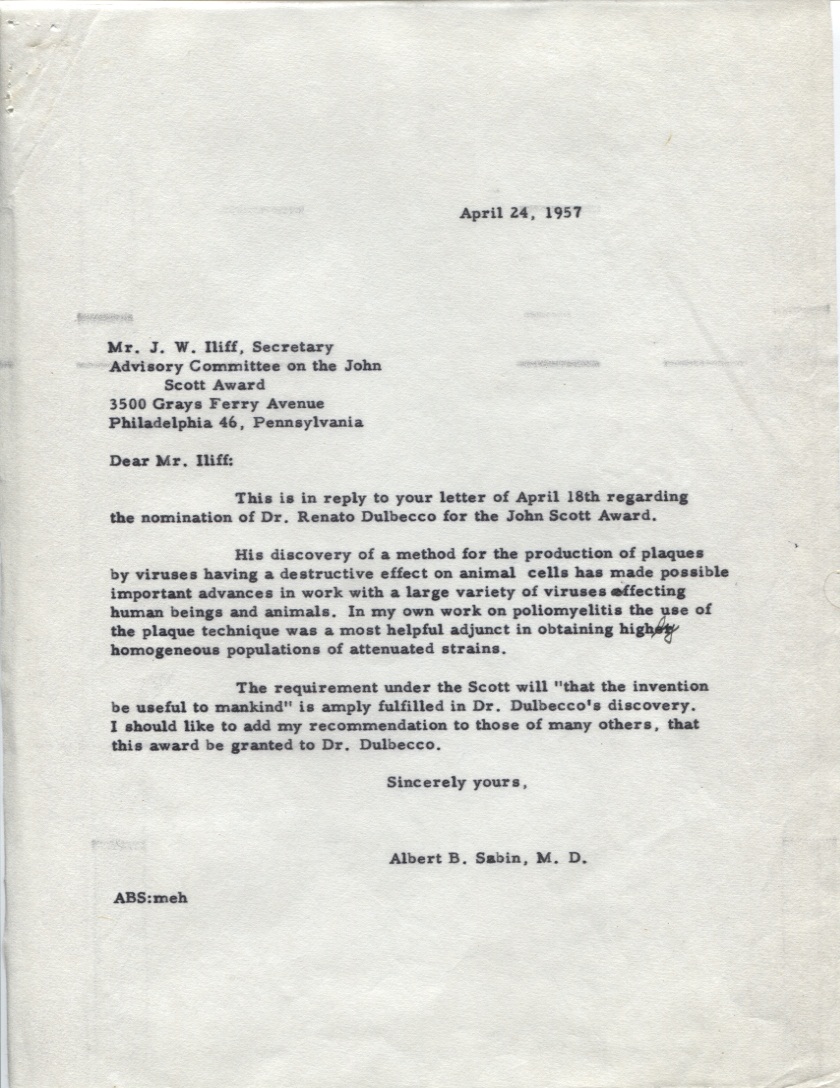ILLiad (Interlibrary Loan) will be unavailable to users and staff Monday, March 19 for a migration to a new server and upgrade of the software. Thank you for your patience.
Author Archives: Melissa Cox Norris
The Albert B. Sabin Digitization Project: Reaction to the Salk Polio Vaccine Clinical Trials
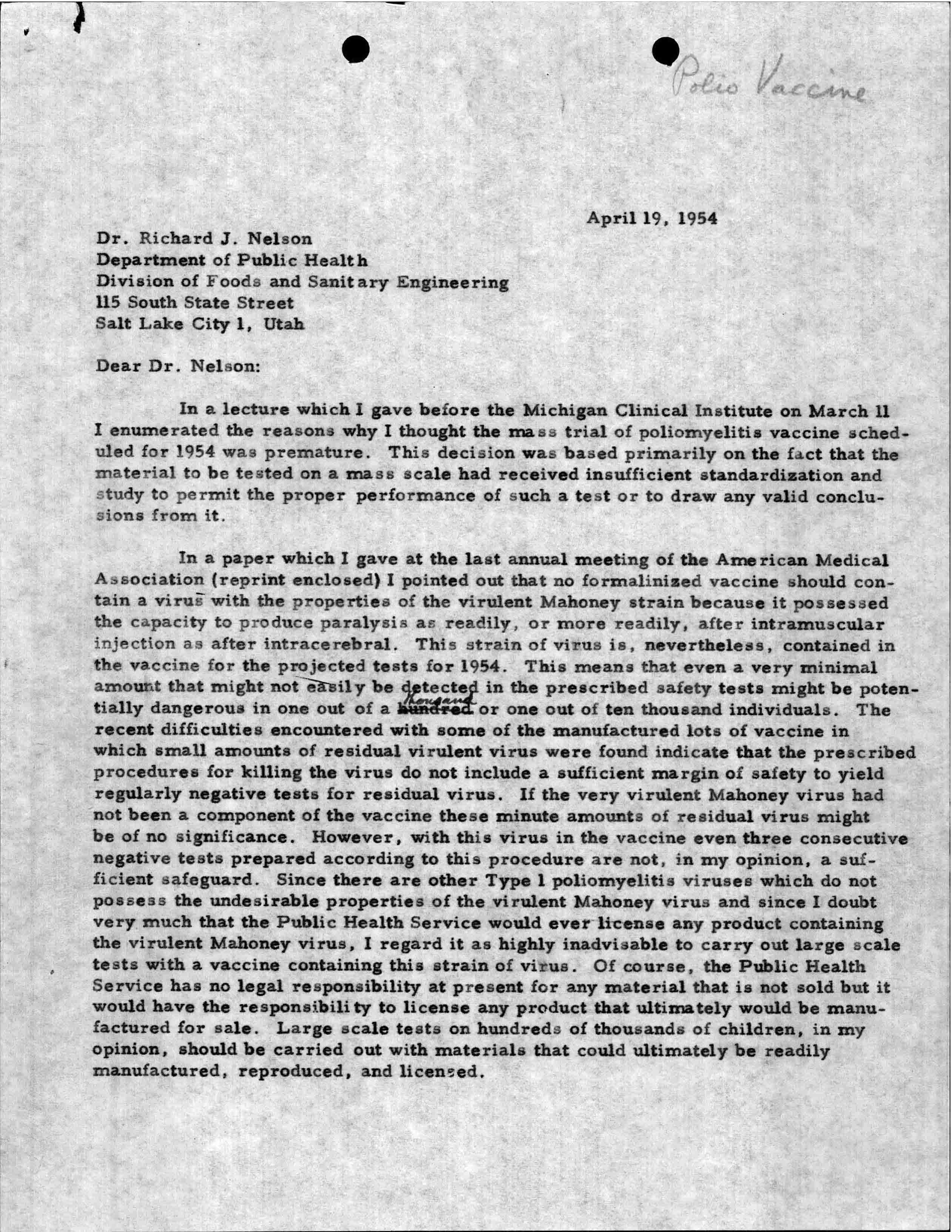
Letter from Dr. Sabin to Dr. Richard Nelson regarding the 1954 mass trial of Salk's poliomyelitis vaccine.
By Megan Ryan, Sabin Project Student Assistant
The clinical trials for Dr. Jonas Salk’s polio vaccine began on February 23rd, 1954. This initial mass inoculation was huge in scale, “the clinical trials of the Salk vaccine were the largest ever conducted, involving nearly two million children”. Immediately the vaccine was announced and hailed as an enormous victory in the medical field against a disease plaguing countries around the world. In Dr. Salk’s obituary the aforementioned announcement was referred to as “the turning point in the battle against polio” and it was said that, “news caused a public sensation probably unequaled by any health development in modern times”.[1] Continue reading
New: eBooks in Psychiatryonline Collection
The Psychiatryonline collection has grown from a group of 6 American Psychiatric Association journals to include 3 DSM-IV-TR® titles, 9 textbooks, the American Psychiatric Association Practice Guidelines, and patient information handouts. Search across the entire collection or browse individual titles.
On the HSL website, find the journals in the eJournals list and the textbooks in the eBooks list.
Included in the collection are: Continue reading
The Albert B. Sabin Digitization Project: March 3, 1993
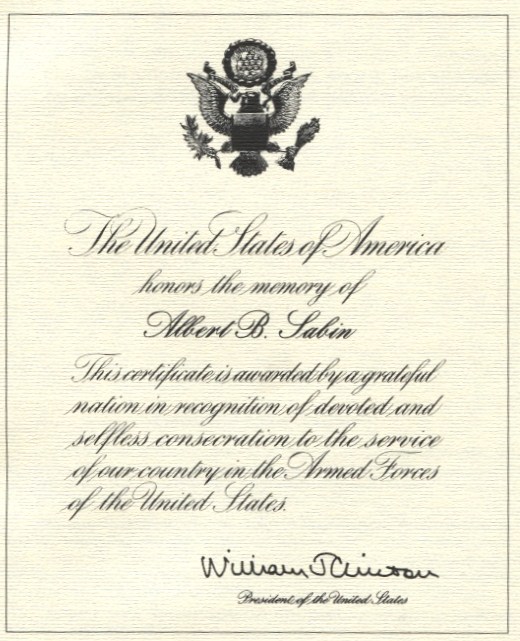
Page from the booklet called, "A Tribute to Albert B. Sabin." This is a copy of a certificate signed by former President Bill Clinton.
The nineteenth anniversary of Dr. Albert B. Sabin’s passing has recently occurred. In memory of Dr. Sabin, I thought I would take a look at some materials that were published shortly after he passed away on March 3, 1993. An introduction to the 1993 issue of Biologicals paying homage to Dr. Sabin said, “The contributions of Albert B. Sabin to modern virology and to public health remain so huge and his personality was so rich and unusual, that it is difficult to pay proper homage in a short article.”[1] This quote is still very true today, but hopefully these materials can share some insight into how friends and colleagues felt at the time. Continue reading
Service Note: Alienware Workstations and Disability Services Moving Temporarily for Renovation of STRC
On Monday, March 19, construction will begin on the renovation of the Student Technology Resources Center (STRC) on the 4th floor of Langsam Library. A full-height, drywall construction barrier will be installed around the STRC area to minimize dust and noise throughout the project.
Beginning Monday, March 12, the Alienware Video Editing workstations located in the STRC, as well as the Disability Services workstations will be relocated temporarily to Langsam Library 461 to allow for the renovation of the STRC and the Disability Services Office. All other services will remain available in the current STRC space.
Books Good Enough to Eat. Create an Edible Book for the International Edible Books Festival.
 For the 10th year, the University of Cincinnati Libraries will celebrate the International Edible Books Festival with an event scheduled for Thursday, April 5, 2012, from 12:30-1:30pm in the 5th floor lobby of Langsam Library. The Libraries are seeking people interested in creating an edible book for the viewing and consuming enjoyment of those in attendance at the event. Continue reading
For the 10th year, the University of Cincinnati Libraries will celebrate the International Edible Books Festival with an event scheduled for Thursday, April 5, 2012, from 12:30-1:30pm in the 5th floor lobby of Langsam Library. The Libraries are seeking people interested in creating an edible book for the viewing and consuming enjoyment of those in attendance at the event. Continue reading
OhioLINK Access Tip
OhioLINK is a wonderful resource for Ohio students, faculty, and researchers. Thousands of electronic journals, e-books, images, videos, and sounds are available from anywhere at any time. That’s especially true when you are on campus. But when you’re off campus, the OhioLINK authentication process may slow down the ease of access.
Access Tip: bypass the OhioLINK authentication process by logging into the UC proxy server instead, then go to OhioLINK.
The Albert B. Sabin Digitization Project: "Useful to Mankind"
I read a recent New York Times obituary of Dr. Renato Dulbecco, a Nobel Prize winning virologist. In 1975, he and his colleagues received the award “for their discoveries concerning the interaction between tumour viruses and the genetic material of the cell.”[1] Although most knew him from his cancer research, Dr. Dulbecco’s earlier research was an important piece of Dr. Sabin’s oral polio vaccine puzzle. The work that they completed together was mentioned in a previous blog post called “A Polio Research Collaboration.” Continue reading
Source, UC Libraries Newsletter Available
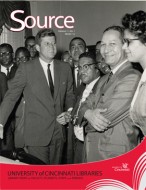 Want to Know the Latest in Library News? Read Source, the UC Libraries newsletter for faculty, students, staff, and friends.
Want to Know the Latest in Library News? Read Source, the UC Libraries newsletter for faculty, students, staff, and friends.
This volume announces the availability of the papers of Theodore M. Berry in the Archives and Rare Books Library. Berry (1905-2000) was the first African American mayor in Cincinnati, served the Lyndon B. Johnson presidential administration in civil rights programs, and was an active attorney for the NAACP. The Berry papers, acquired by the UC Libraries many years ago, were able to be fully processed through a grant from the National Historical Publications and Records Commission of the National Archives. The materials are now available for research and teaching. Continue reading
Documenting a Lifetime of Service: The Papers of Theodore M. Berry Now Available
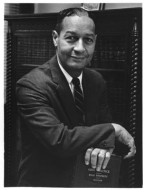 By Kevin Grace, UC Archivist and Head of the Archives and Rare Books Library
By Kevin Grace, UC Archivist and Head of the Archives and Rare Books Library
Theodore M. Berry (1905-2000) was a key figure in American civil rights in the 20th century, a man who marked his life with a formidable sense of justice. From the 1930s, when he graduated from the University of Cincinnati with bachelor’s and law degrees, until his death just before a new century, Berry worked tirelessly to promote racial harmony and served with distinction in President Lyndon Johnson’s programs for civil rights during the 1960s.
Three decades ago, Berry donated his papers to the University of Cincinnati where they are housed in the Archives and Rare Books Library.

